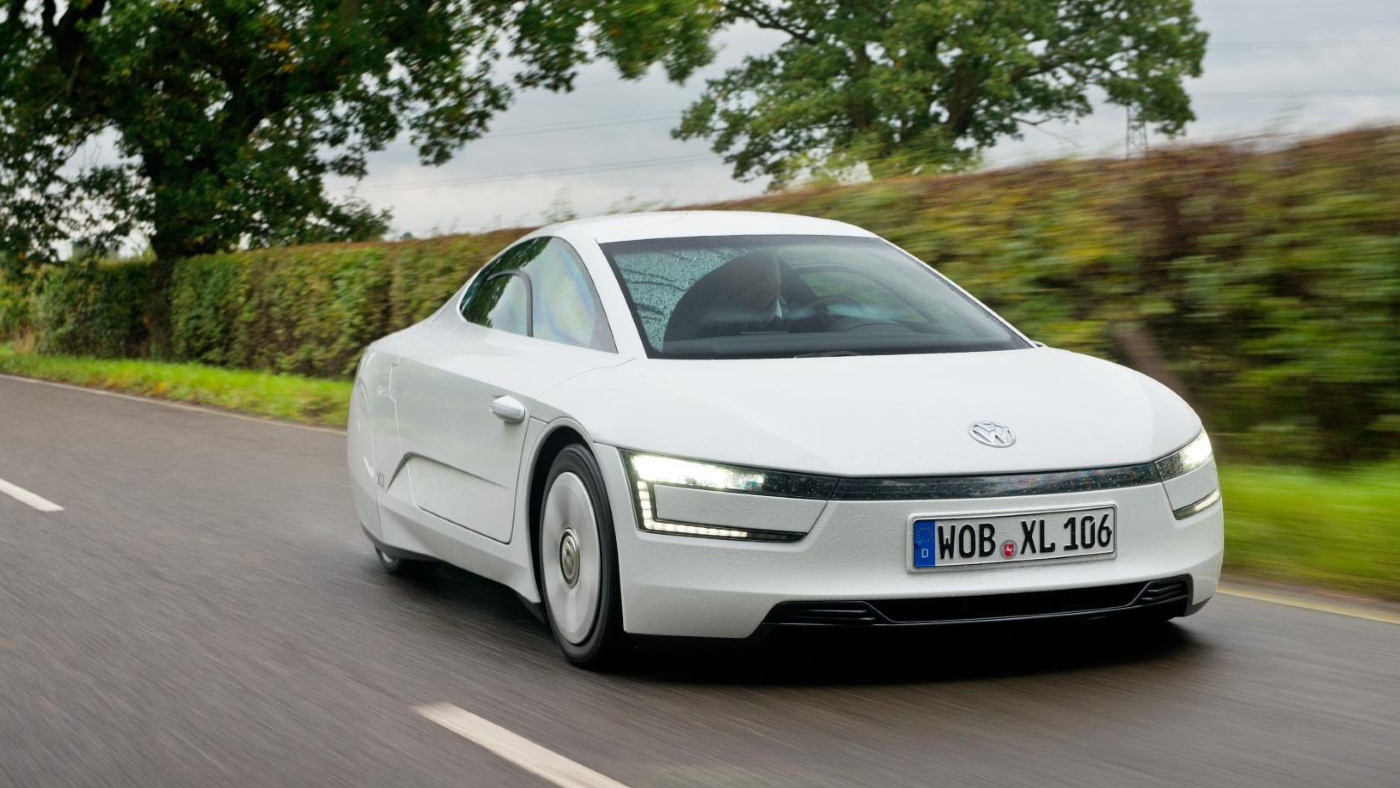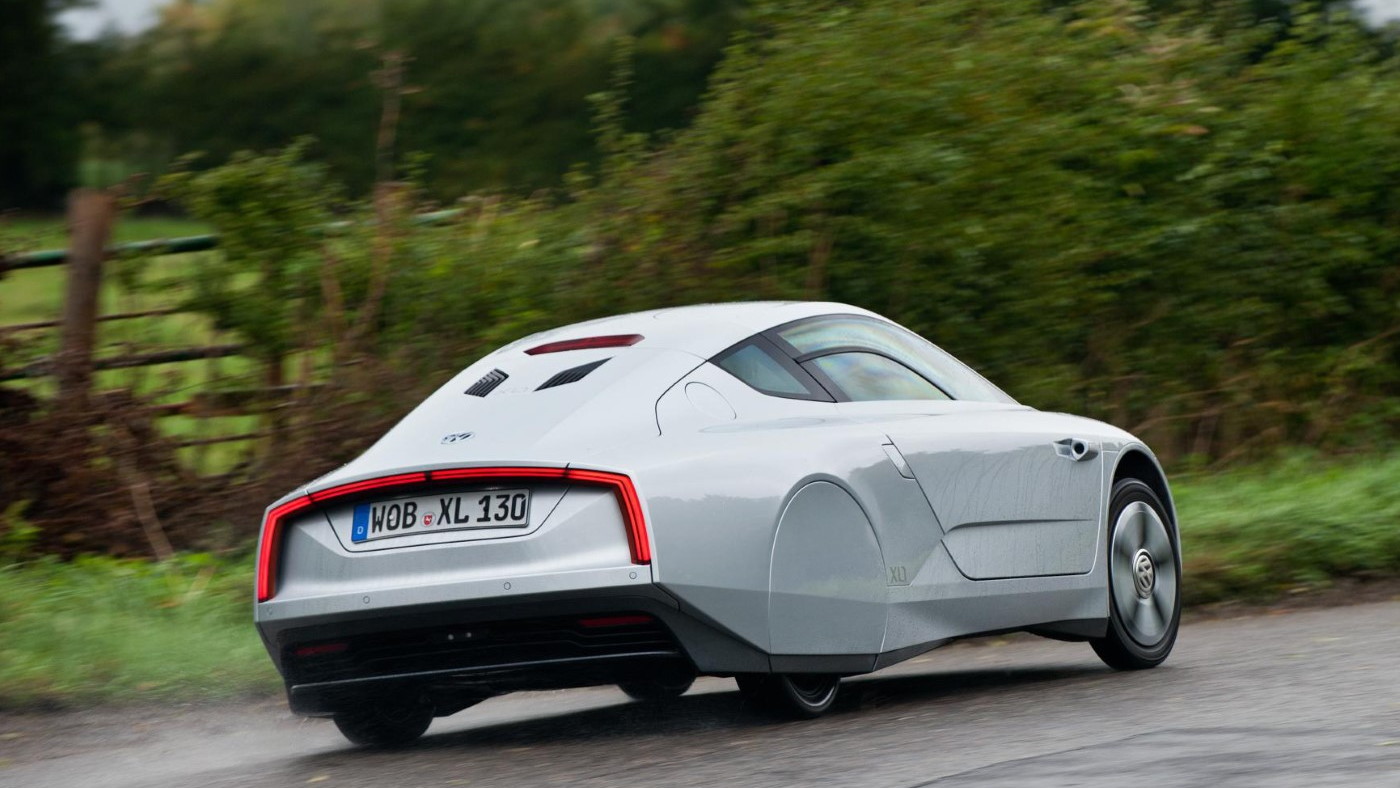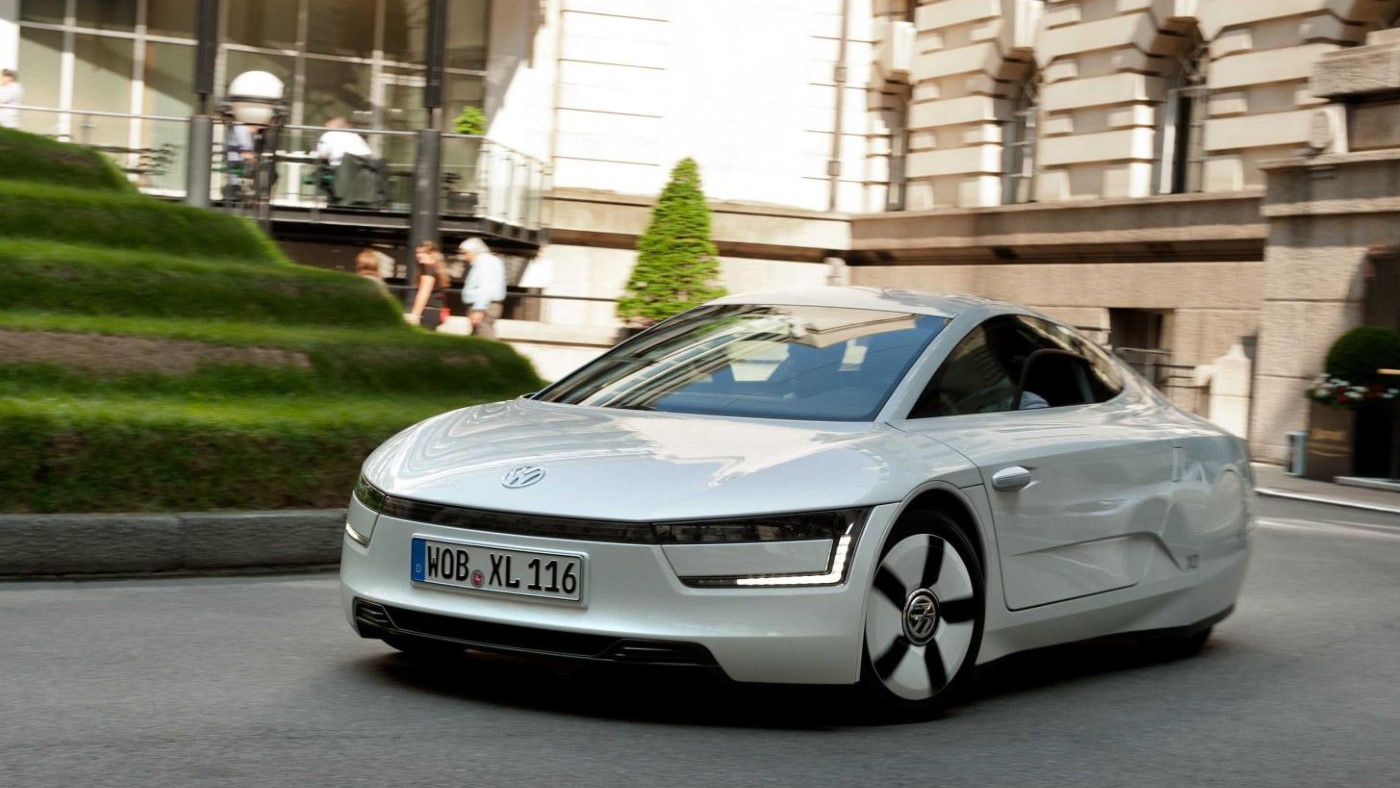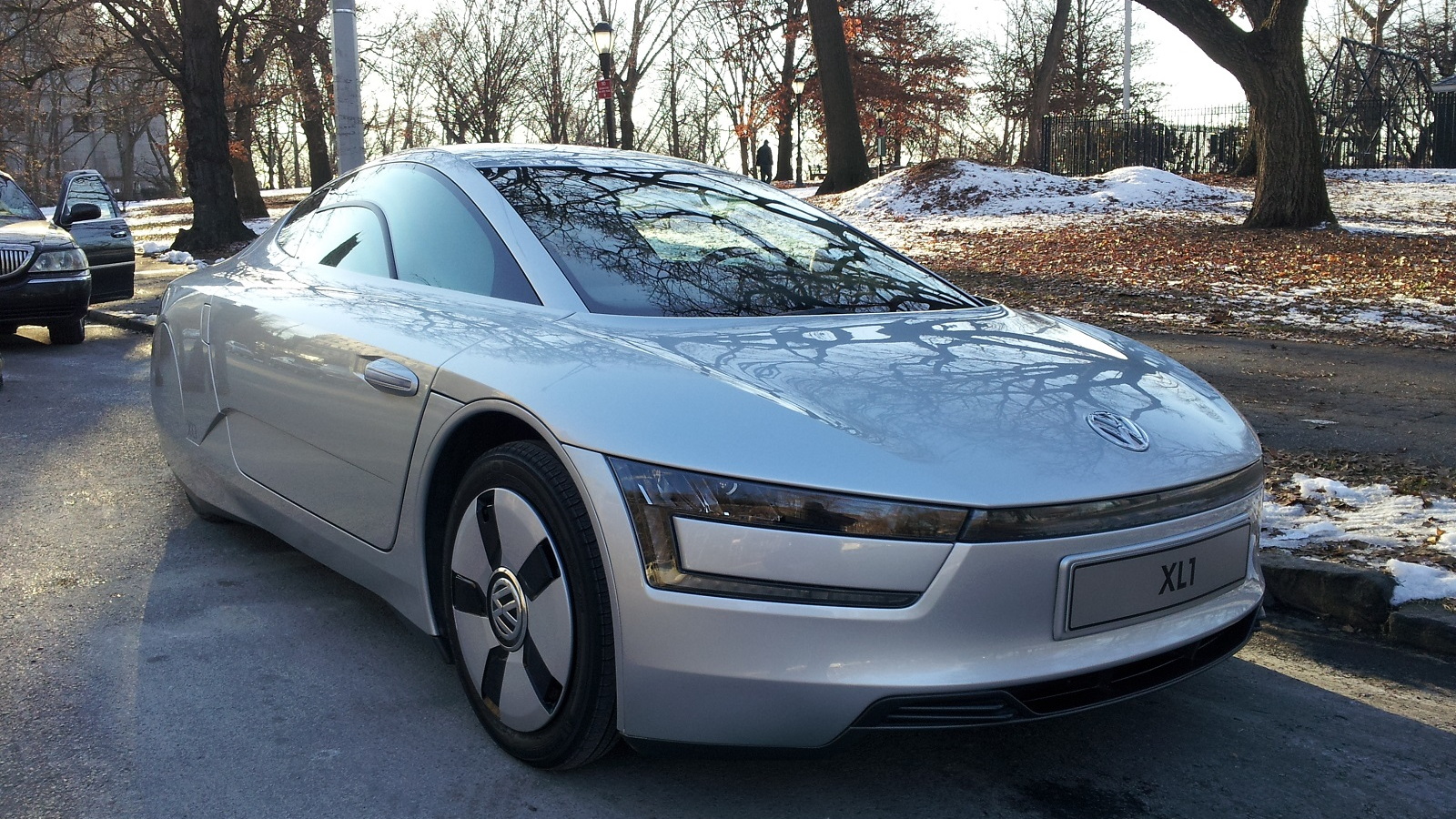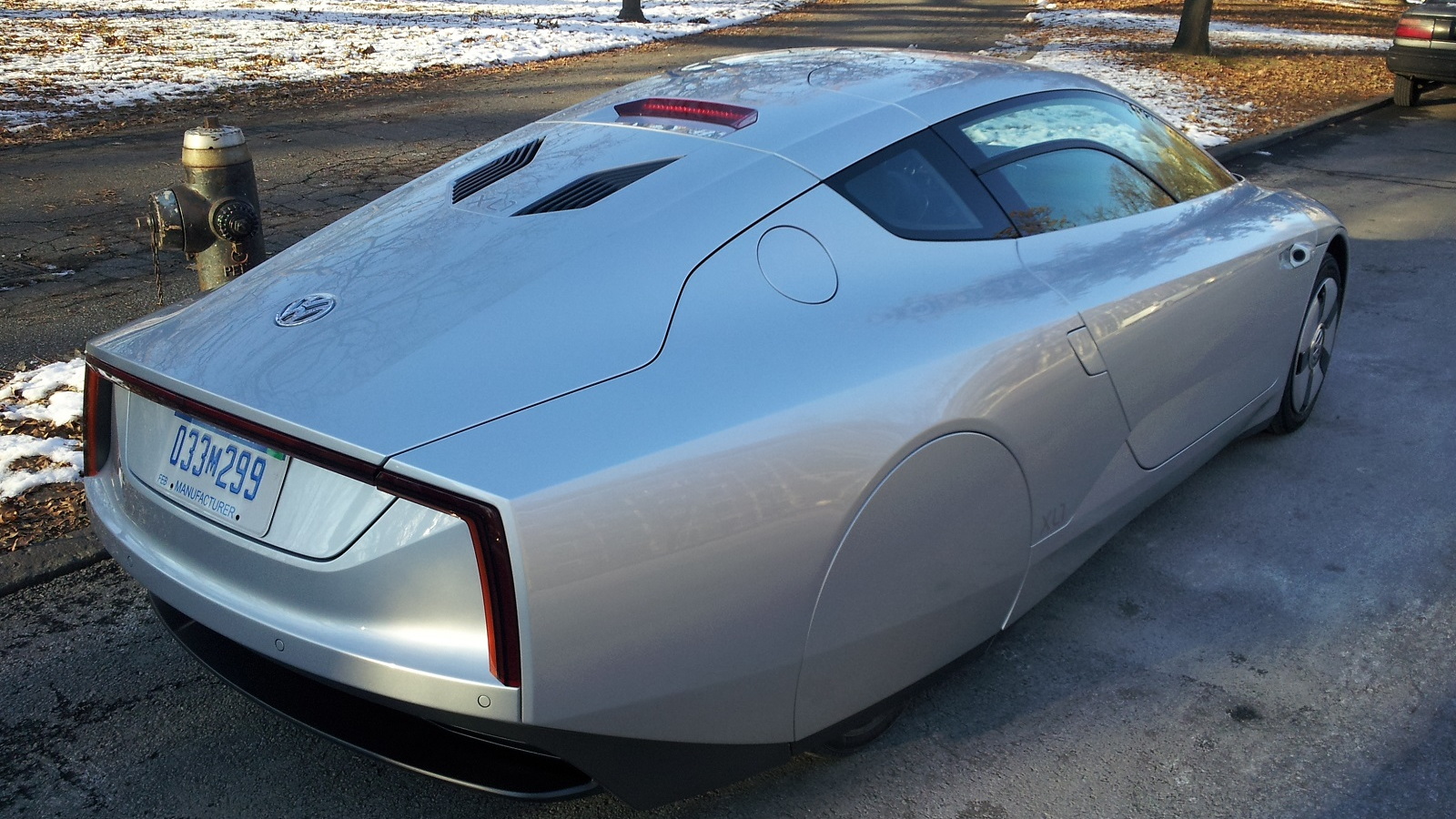For a two-seat car priced at more than $100,000, not sold in North America, and with just 250 built, the Volkswagen XL1 gets an extraordinary amount of attention.
That's due to the hugely high fuel-economy ratings for the tiny carbon-fiber vehicle powered by a diesel plug-in hybrid system.
It's rated at a combined 261 miles per gallon on the European cycle, using both battery energy and diesel propulsion (or 310 mpg in the U.K., using Imperial gallons).
DON'T MISS: 2014 Volkswagen XL1: First Drive Of Wolfsburg's 261-MPG Car
VW execs say it runs at 138 miles per gallon as a conventional hybrid on its two-cylinder diesel engine, once the battery is depleted.
Now, according to the British magazine Autocar, Volkswagen is investigating the possibility of a four-seat version of the car--possibly to be called the XL2.

Volkswagen XL1 (European model), New York City, Dec 2013
It would retain the XL1's 47-hp 0.8-liter two-cylinder diesel hybrid setup, along with the battery pack that plugs into the grid to recharge.
The higher weight of a larger vehicle and up to four occupants might require a higher-output powertrain, however, and the current 5.5-kilowatt-hour lithium-ion battery might also have to be enlarged.
Most crucially, the XL1's carbon-fiber tub would have to be entirely redesigned to accommodate four seats.
ALSO SEE: Volkswagen XL1 138-MPG Diesel Plug-In Hybrid: Drive Report
Autocar suggests that it would likely get an additional pair of doors, perhaps rear-hinged like those on the BMW i3 electric car. the XL1's two doors are hinged from the windshield pillars, so that might have change too.
But the staggered seating positions would remain, to reduce the car's frontal area and hence the energy required to overcome aerodynamic drag at speeds of 30 mph or higher.
The current car's front and rear subframes, suspension, brakes, and electrical system might well be carried over intact as well.

Bengt in Volkswagen XL1
The additional weight of a higher-output powertrain and the extra seats, along with the body to enclose them, means that a Volkswagen XL2 might not weigh that much less than the lightest four-seat VW Up minicar.
But Volkswagen would aim for the same fuel consumption rating from an XL2 as from the two-seat XL1, based on unspecified efficiency improvements in the powertrain, along with an even lower drag coefficient from the longer body.
MORE: Ultra-Efficient VW XL1: Now An Urban Legend, Debunked By Snopes
The XL1 is the production version of a car more than 10 years in the making, stemming from VW's goal of building a "1-liter" car, or a vehicle that could cover 100 km (62 mi) on 1 liter (0.26 gallons) of fuel.
That's 238 mpg.

2014 Volkswagen XL1 (Euro spec) - First Drive, Wolfsburg, June 2013
And when it was released, the XL1 got so much notice that it became the topic of an urban legend that had to be fact-checked (meaning largely debunked) by the Snopes website.
If Volkswagen can really produce a four-seat production car that achieves more than 100 miles per gallon in everyday running, it would be a huge achievement.
It might also provide, Autocar suggests, an effective counter to the arrival of hydrogen fuel-cell vehicles from Honda and Toyota, which are expected on the market in 215 and 2016.
_______________________________________________
